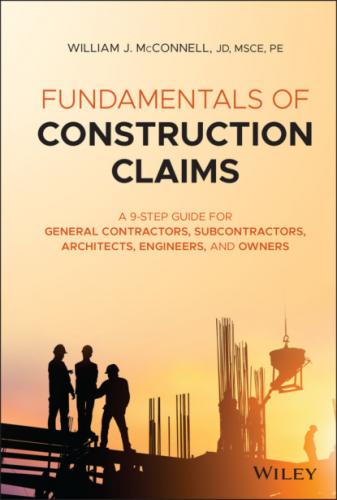15 11 Termination Claims I. Termination for Convenience (Owner Termination of Contractor for Convenience) II. Termination for Cause (Owner Termination of Contract with Contractor) III. Termination for Cause (Contractor Termination of Contract with Owner)
16 12 Non-Contract Claims and Defenses I. Introduction II. Non-Contract Claims III. Non-Contract Defenses to Breach of Contract Claims IV. Summary
17 13 Allocation of Damages I. Step 1 Defining the Issue in Dispute II. Step 2 Defining the Duties of the Various Parties III. Step 3 Is the Issue Patent or Latent in Nature? IV. Step 4 Was the Defective Work Covered Up by a Subsequent Trade? V. Step 5 Did a Third-Party Inspector Approve the Work? VI. Step 6 Do the Contracts have Indemnification Clauses? VII. Step 7 Identify the Responsibility of the Various Parties VIII. General Theory of Allocation Percentages
19 Index
List of Tables
1 Chapter 7Table 7.1 Estimate of contractor's productivityTable 7.2 Project size and fee markup (%)
2 Chapter 8Table 8.1 Formatting recommendationsTable 8.2 Hierarchy of order of outline numbering
List of Illustrations
1 Chapter 1Figure 1.1 Dispute resolution flowchart.
2 Chapter 6Figure 6.1 Example of true concurrent delay.Figure 6.2 Example of concurrent delay.
3 Chapter 7Figure 7.1 Excerpt of contract executed between framing contractor and owner...Figure 7.2 Excerpt of unit price contract executed between contractor and ow...Figure 7.3 Excerpt of On-Screen Takeoff showing the total quantity of concre...Figure 7.4 Pricing data on bid tabs.Figure 7.5 Project costs.
Guide
1 Cover
7 Index
Pages
1 iii
2 iv
3 ix
4 1
5 2
6 3
7 4
8 5
9 6
10 7
11 8
12 9
13 10
14 11
15 12
16 13
17 14
18 15
19 16
20 17
21 18
22 19
23 20
24 21
25 22
26 23
27 25
28 26
29 27
30 28
31
